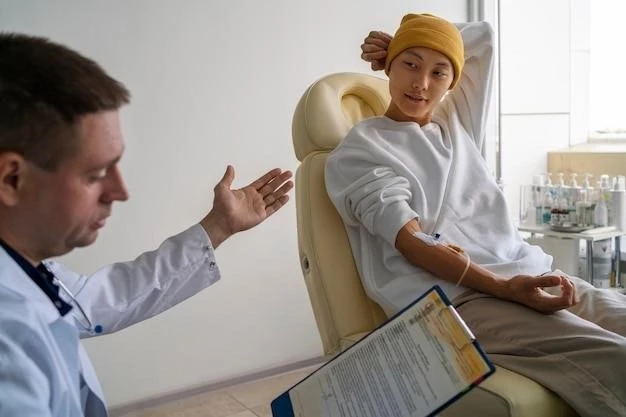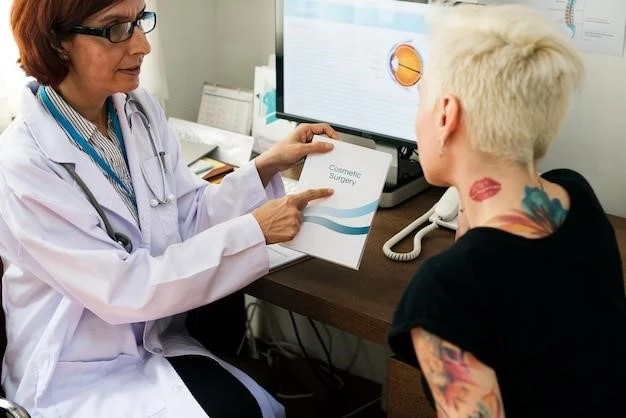Marchiafava–Bignami Disease
Marchiafava-Bignami disease is a rare neurological disorder often associated with chronic alcoholism and malnutrition. This article aims to explore the various aspects of the disease, from understanding the brain degeneration it causes to diagnostic tools, symptoms, mortality rates, treatment approaches, and prognosis.
Introduction
Marchiafava-Bignami disease, named after the Italian pathologists Amico Bignami and Ettore Marchiafava, is a rare condition characterized by the degeneration of the corpus callosum ー the part of the brain responsible for connecting the two hemispheres. This neurological disorder is often linked to chronic alcoholism, malnutrition, and nutritional deficiencies.
First identified in the early 20th century, Marchiafava-Bignami disease predominantly affects individuals with a history of long-term heavy alcohol consumption. The exact mechanisms leading to the degeneration of the corpus callosum are not fully understood, but it is believed that factors such as malnutrition, particularly a deficiency in B vitamins, play a significant role.
Understanding the complexities of this disease is crucial for early detection and appropriate management. Despite its rarity, healthcare professionals need to be aware of Marchiafava-Bignami disease, especially when presented with patients exhibiting symptoms such as confusion, ataxia, seizures, and coma.
Through this article, we delve into the various aspects of Marchiafava-Bignami disease, shedding light on diagnostic tools, symptoms, progression, mortality rates, treatment approaches, rehabilitation, and prognosis. Stay tuned to gain a comprehensive understanding of this unique neurological condition and the challenges associated with its management.
Understanding Brain Degeneration
Marchiafava-Bignami disease is characterized by a specific form of brain degeneration that primarily affects the corpus callosum. The corpus callosum is a band of nerve fibers that facilitates communication between the two cerebral hemispheres, playing a crucial role in various cognitive and motor functions.

In individuals with Marchiafava-Bignami disease, the degeneration of the corpus callosum leads to disruptions in the transmission of signals between the brain hemispheres, resulting in a range of neurological symptoms. The exact mechanisms underlying this degeneration are not fully elucidated, but it is believed to be multifactorial, with chronic alcoholism and malnutrition playing key roles.
Chronic alcohol consumption is known to have detrimental effects on the brain, leading to structural changes and impairing neuronal function. The toxic effects of alcohol on the brain, combined with associated nutritional deficiencies commonly seen in alcoholics, can contribute to the degeneration of the corpus callosum observed in Marchiafava-Bignami disease.
Furthermore, malnutrition, particularly deficiencies in B vitamins such as thiamine (vitamin B1), has been implicated in the pathogenesis of the disease. Thiamine deficiency, often seen in individuals with alcohol use disorder, can lead to neurological complications, including damage to the brain’s white matter, which includes the corpus callosum.
By understanding the mechanisms of brain degeneration in Marchiafava-Bignami disease, healthcare professionals can better appreciate the complex interplay between alcoholism, malnutrition, and neurological damage. Early recognition of these factors is essential for effective diagnosis and management of this rare neurological condition.
Diagnostic Tools
Diagnosing Marchiafava-Bignami disease often involves a combination of clinical assessments, imaging studies, and laboratory tests to confirm the presence of corpus callosum degeneration and rule out other neurological conditions with similar symptoms.
One of the primary diagnostic tools used in the evaluation of Marchiafava-Bignami disease is magnetic resonance imaging (MRI) of the brain. MRI scans can reveal characteristic lesions in the corpus callosum, indicating the presence of degeneration and structural abnormalities consistent with the disease.
In addition to imaging studies, healthcare providers may conduct neurological examinations to assess the patient’s cognitive function, motor skills, and coordination. These evaluations can help identify specific neurological deficits associated with Marchiafava-Bignami disease, such as ataxia (impaired coordination) and confusion.
Laboratory tests may also be performed to evaluate the patient’s nutritional status, particularly levels of B vitamins such as thiamine. Malnutrition and vitamin deficiencies are common contributors to the development of Marchiafava-Bignami disease, and assessing these levels can provide valuable insights into potential underlying causes.
Furthermore, a comprehensive medical history, including information about alcohol consumption patterns, nutritional habits, and any preexisting neurological conditions, is essential for establishing a diagnosis. Patients with a history of chronic alcoholism and malnutrition are at higher risk for developing Marchiafava-Bignami disease and should undergo thorough evaluation.
By utilizing a combination of imaging studies, clinical assessments, laboratory tests, and detailed medical histories, healthcare professionals can accurately diagnose Marchiafava-Bignami disease and initiate appropriate treatment strategies to address the underlying neurological degeneration and associated symptoms.
Symptoms and Progression
Marchiafava-Bignami disease is characterized by a spectrum of symptoms that reflect the neurological degeneration and structural changes in the corpus callosum. The progression of the disease can vary among individuals, but common symptoms and stages have been identified to aid in diagnosis and management.
Early symptoms of Marchiafava-Bignami disease may include confusion, memory problems, and behavioral changes. Patients may exhibit difficulties with cognitive tasks, experience disorientation, and show signs of altered mental status as a result of the corpus callosum degeneration affecting brain function.
As the disease advances, individuals may develop motor deficits such as ataxia, characterized by impaired coordination and muscle control. Ataxia can manifest as unsteady gait, tremors, and difficulties with fine motor skills, impacting activities of daily living and mobility.
In some cases, patients with Marchiafava-Bignami disease may experience seizures, which can further complicate the clinical presentation and lead to additional neurological complications. Seizures may be recurrent and require careful management to control and prevent further brain damage.
Progression to more severe stages of the disease can result in coma and profound neurological impairments, reflecting extensive damage to the corpus callosum and surrounding brain regions. Coma is a critical stage in the disease course and is associated with high mortality rates without prompt intervention and supportive care.
Overall, the symptoms and progression of Marchiafava-Bignami disease underscore the urgent need for early recognition and intervention to prevent further neurological damage and improve patient outcomes. Understanding the trajectory of the disease can guide healthcare providers in developing tailored treatment plans and supportive care strategies to address the complex challenges associated with this rare neurological disorder.
Mortality Rates and Prognosis
Marchiafava-Bignami disease is associated with significant mortality rates, particularly in cases where the diagnosis is delayed or when the disease progresses to advanced stages with severe neurological complications. The prognosis for individuals with this rare neurological disorder is often guarded, highlighting the importance of early detection and prompt treatment.
The mortality rates for Marchiafava-Bignami disease can vary depending on the stage of the disease, the extent of corpus callosum degeneration, and the presence of complications such as coma and seizures. Studies have shown that mortality rates are higher in individuals with advanced disease stages and significant neurological impairment.
Prognosis for patients diagnosed with Marchiafava-Bignami disease is generally poor, especially in cases where there is extensive damage to the corpus callosum and associated brain structures. Neurological deficits resulting from the disease can have a profound impact on cognitive function, motor skills, and overall quality of life.
Early intervention and aggressive treatment approaches are essential in improving the prognosis for individuals with Marchiafava-Bignami disease. Timely administration of neuroprotective therapies, nutritional support, and rehabilitation services can alleviate symptoms, slow disease progression, and enhance patient outcomes.
Recovery and long-term prognosis for Marchiafava-Bignami disease are highly variable and depend on various factors, including the individual’s overall health status, response to treatment, and the presence of comorbid conditions such as alcoholism and malnutrition. Close monitoring and multidisciplinary care are essential in managing the complex challenges associated with this debilitating neurological disorder.
Treatment Approaches
The treatment of Marchiafava-Bignami disease involves a multidisciplinary approach aimed at addressing the underlying neurological degeneration, managing symptoms, and improving patient outcomes. While there is no specific cure for the disease, several therapeutic strategies can help mitigate its effects and enhance quality of life for affected individuals.
One of the primary goals of treatment is to provide supportive care to address the symptoms and complications associated with Marchiafava-Bignami disease. Patients may require interventions to manage confusion, seizures, ataxia, and other neurological deficits that arise as a result of corpus callosum degeneration.
Neuroprotective therapies, aimed at preserving brain function and preventing further damage, are often recommended for individuals with Marchiafava-Bignami disease. These may include medications to control seizures, cognitive enhancers to address memory problems, and physical therapy to improve motor skills and coordination.
Nutritional support is also a critical component of treatment, particularly for patients with underlying malnutrition and vitamin deficiencies. Ensuring adequate intake of essential nutrients, including B vitamins such as thiamine, can help support brain health and optimize recovery from the disease.
In severe cases where patients experience coma or significant neurological impairment, intensive care and monitoring are essential to prevent complications and improve outcomes. Rehabilitation services, including physical therapy, occupational therapy, and speech therapy, may be recommended to help patients regain function and independence.
Long-term management of Marchiafava-Bignami disease often requires ongoing monitoring and adjustments to the treatment plan based on the individual’s response to therapy and progression of the disease. Regular follow-up visits with healthcare providers and specialists are essential to assess treatment efficacy and address any new symptoms or challenges that may arise.
While the prognosis for Marchiafava-Bignami disease can be guarded, early diagnosis, comprehensive care, and a coordinated treatment approach can significantly impact patient outcomes and quality of life. By addressing the complex neurological and nutritional components of the disease, healthcare teams can provide optimal support for individuals affected by this rare and challenging condition.
